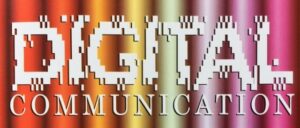 Everywhere you look you’ll find something that is “digital.” Computers, smartphones, streaming movies, video game consoles, household appliances, cars and thousands of other gadgets use digital information. We use these items every day but few people understand what the term “digital” really means.
Everywhere you look you’ll find something that is “digital.” Computers, smartphones, streaming movies, video game consoles, household appliances, cars and thousands of other gadgets use digital information. We use these items every day but few people understand what the term “digital” really means.
What does the word “digital” mean?
It comes from “digit,” one of ten symbols used to write numbers. Precisely speaking, the digits are 0, 1, 2, 3, 4 ,5, 6, 7, 8 and 9. But in talking about computers, “digital” refers to just the digits “0” and “1.” Digital machines store and communicate information as 0’s and 1’s.
University of Houston video: What is Digital Media?
Digital Code:
Take the letter “A.” when an “A” is typed into a computer, it is immediately translated into a string of 0’s and 1’s (called a digital code). The digital code for “A” is “01000001.” Every letter of the alphabet has its own digital code. The code for “C” is “01000011.” And the code for “T” is “01010100.”. when you type the word “CAT” the computer translates the word into digital code: “01000011 01000001 01010100.”
Language of the computer:
The language of the computer is made up simply of 0’s and 1’s. Basically, computers store and respond to various combinations of 0’s and 1’s. A specific combination of 0’s and 1’s tells the computer to do one thing. Another combination of 0’s and 1’s tells the computer to something else.
Digitized sound:
Sounds can also be digitized – represented as a string of 0’s and 1’s. Sound is a vibration, and the exact shape of the vibration can be represented as a code of 0’s and 1’s. A music CD stores 0’s and 1’s as variations of vibrations on the surface of the CD. There are hundreds of millions of such variations on the CD. A CD player, for example, turns this digital information back into Music.
Digital pictures:
Photographs and illustrations are also digitized. For example, a picture that fills a typical computer screen is actually made up of more than 300,000 “dots.” Each dot can be a different color and every color has its own code of 0’s and 1’s. (For example, red might be”10101001010100001011101.” If the color of each dot in the picture is represented by such a code, then the code for a whole picture would be a very long string of 0’s and 1’s.
Digital video:
A film or video is made up of a series of still pictures or frames. The frames are shown in rapid succession (in the video, normally at the rate of 30 frames per second) and our eyes merge the separate images together to form the illusion of motion. As with a single picture, every one of these individual frames can be translated into a code of 0’s and 1’s. In this way, film and video can be digitized, but it takes a lot of 0’s and 1’s to represent even a few seconds of video information.
Digital compression:
With special mathematical techniques, the number of 0’s and 1’s needed to represent words, sounds or pictures can be reduced for easier storage or transmission and then expanded when the information is read, heard or viewed. These techniques called “compression” and “decompression” can reduce the number of 0’s and 1’s needed to one-tenth or even one-hundredth of the original amount. But even with compression, many thousands of 0’s and 1’s are required to represent a picture and hundreds of millions are needed to represent the 1800 pictures in just one minute of video!
Information superhighway:
Digital communication channels do not distinguish between words, music, pictures or movies – it is all simply 0’s and 1’s. This means we will only need one type of communication network to meet our information and entertainment needs.
Today, the field of telecommunications (“tele” meaning transmitted over a distance) uses electricity (by telephone wire and TV cable), light (by fiber optic glass cable) and radio waves (by radio or microwave broadcasting) to carry these digital codes so fast they travel almost instantly. All of these methods of transmission make up the growing digital communication network which has been named the “information superhighway.”
The future:
As the information superhighway grows, and more and more digital information is available our lives continue to change. More and more people have access to vast quantities of information, as well as new entertainment, education, and commercial services. One thing that will not change: information, no matter what form it is in, is only valuable to the degree we use it well. The digital revolution has given us new tools; it’s up to us to decide what we will build with them.
